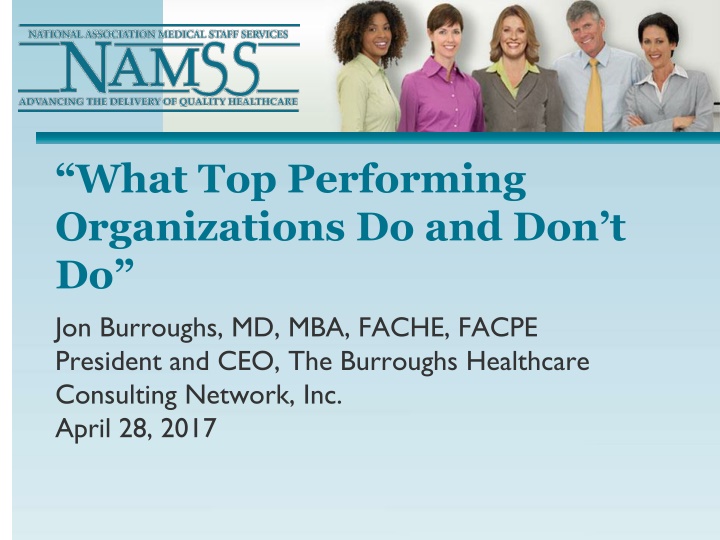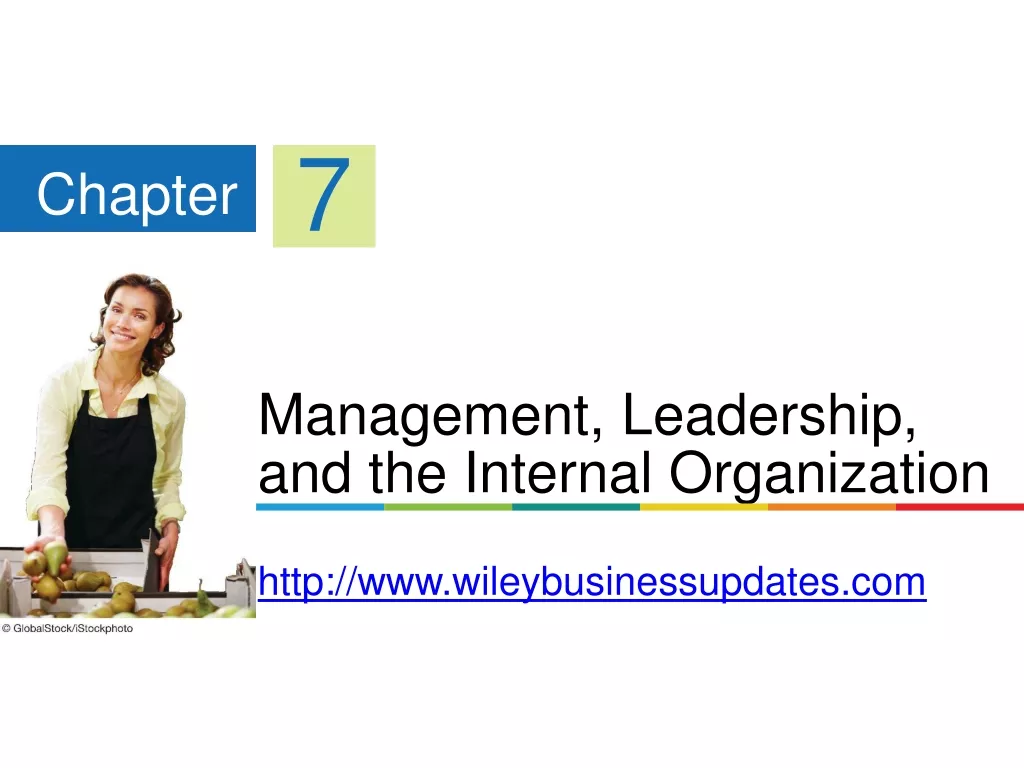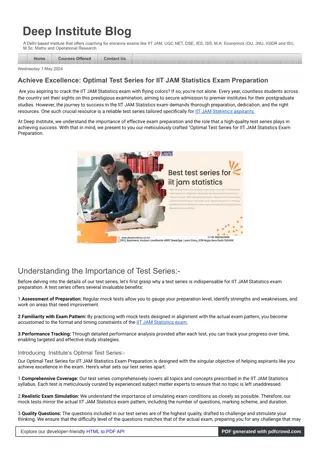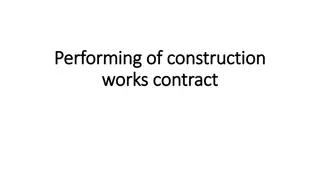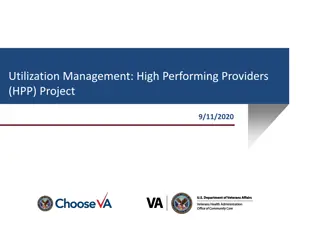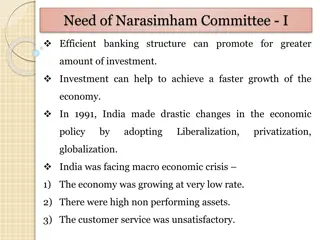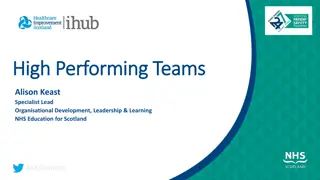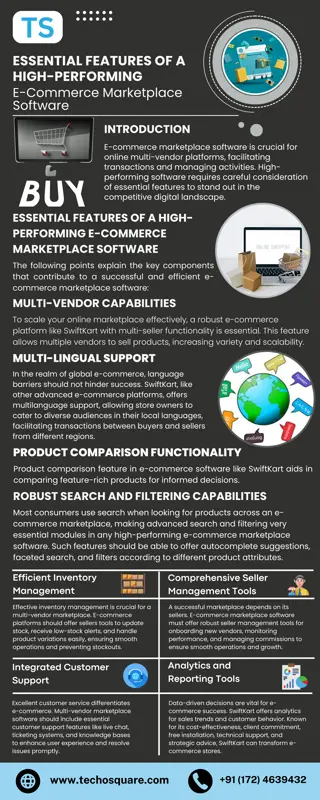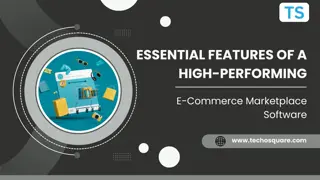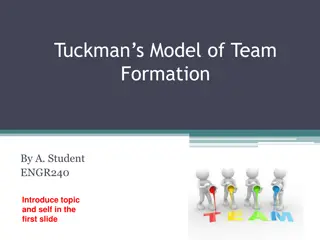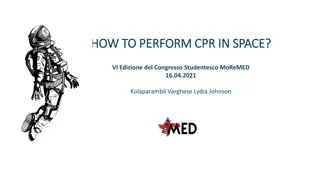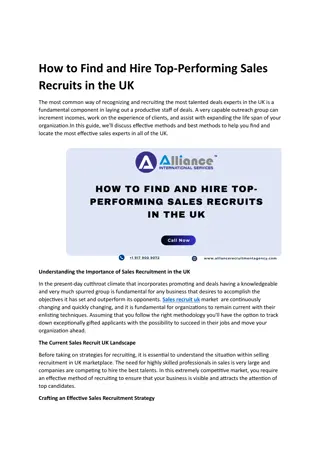Top Performing Organizations: Strategies for Success
Learn about the key strategies employed by top performing organizations to achieve success, focusing on culture, customer-centric values, innovation, accountability, and stewardship. Discover how high performance is defined in terms of economic metrics, outcomes, safety, and more, and explore the importance of cultivating a positive organizational culture to drive strategic possibilities and enhance overall performance.
Download Presentation

Please find below an Image/Link to download the presentation.
The content on the website is provided AS IS for your information and personal use only. It may not be sold, licensed, or shared on other websites without obtaining consent from the author.If you encounter any issues during the download, it is possible that the publisher has removed the file from their server.
You are allowed to download the files provided on this website for personal or commercial use, subject to the condition that they are used lawfully. All files are the property of their respective owners.
The content on the website is provided AS IS for your information and personal use only. It may not be sold, licensed, or shared on other websites without obtaining consent from the author.
E N D
Presentation Transcript
What Top Performing Organizations Do and Don t Do Jon Burroughs, MD, MBA, FACHE, FACPE President and CEO, The Burroughs Healthcare Consulting Network, Inc. April 28, 2017
How do you define High Performance ? Economic (volume, margin, core measures, outcomes, HCAHPS)? Thomson Reuters (outcomes, safety, mortality/morbidity, core measures, ALOS, cost per adjusted discharge, margin) ? Baldrige (leadership, planning, customer, measurement, workforce, operations, results) Your strategic criteria? Your customers criteria?
I. Focus on Culture! Culture drives everything and either limits or expands strategic possibilities Jim Collins Great by Choice: Uncertainty, Chaos, and Luck-Why Some Thrive Despite them All (2011) Hill Country Memorial Hospital, Fredericksburg, Texas Remarkable Values
RVs #1: Others First Anticipate and exceed expectations to serve others (internal and external) Listen empathetically at all times Teamwork Embrace and honor diversity Recognize the contribution of others Respect one another at all times
RVs #2: Compassion Consistently treat others with courtesy, respect, kindness, and patience Show genuine interest in what is important to others Display a helpful and friendly attitude Support and encourage always
RVs #3: Innovation Embrace evidence based practices Learn from experience and share with others Create unique ways to provide remarkable care Incorporate technology to improve patient and team member experience/outcomes Always think beyond the box
RVs #4: Accountability Provide safe care Lead by example at all times Be open and honest about successes and failures Take initiative for personal growth and development Make appropriate decisions in difficult situations
RVs #5: Stewardship Demonstrate ownership of continuous improvement Actively participate in financial success by optimizing resources Make a positive contribution to our community Note: Everyone in the organization is obligated to sign off on these values annually
Results: Increased Medicare CMI from 1.3 to 1.7 (significant impact on net margin) Press Ganey Mentoring Hospital (99%tile) Top 10%tile for all core/safety measures Chasing 0 safety program (eliminate the denominator) Texas Quality Award Able to attract top national talent 2014 Baldrige Award for Healthcare One of the Top Small Hospitals in the US
II. Commit to Leadership Training and Roles at all Levels of the Organization Leadership academies Certified Physician Executive (CPE) program MBA, MMM, MHA programs 10/17 US News and World Report Top US Hospitals overseen by physician leaders Baylor Healthcare, Dallas, Texas: Mandatory physician leadership boot camp and executive MBA program for committed physician leaders
2017 MSLD Curriculum Medical Staff Leadership Development Program To provide a common development framework for Medical Staff leaders Ensuring the knowledge, skills and balance perspective to fulfill the breadth of their responsibilities. Session 5 May 22 or June 5, 2017 Session 4 May 8, 2017 Session 3 Healthcare Finance Healthcare Law (Allina Legal) Session 2 April 3, 2017 March 6, 2017 Driving Performance Improvement (Gordon, Wheeler, Gallagher, Wieland, Bent, Rice?) Session 1 Credentialing & Privileging: Defining our Culture (Dr. Burroughs/Dr. Martin) February 20, 2017 Anti-Trust Basics Fraud & Abuse Patient Privacy EMTALA Legal protections for Peer Review Medical Staff Investigation, Corrective Action, Fair Hearing Working with Allina Legal Allina s Response to Healthcare Reform & ACO Healthcare Finance Basics Clinical Service Lines Overview (Chris Bent) AIM Network (Brian Rice) Adaptive Leadership & Work/Life balance and Managing of Self Medical Staff Governance (Dr. Burroughs/Allina Legal & others (Dr. Burroughs) OPPE & FPPE, Joint Commission Requirements Making Peer Review Effective Quality Improvement tools and best practices How to Create a Culture of Safety & Service Allina s Culture of Patient Safety and Performance Improvement (Napier, O Hare, Dickie?) Crucial Conversations Overview/Best Practices Strategic Medical Staff Development Planning Defining your Criteria Credentialing and Privileging Privileging Challenges Managing Performance Issues Addressing Disruptive Physician Behavior Avoiding the Biggest Legal Mistakes Adaptive Leadership (Dr. Corey Martin) Program Overview The Imperative for Physician Leadership in Healthcare Transformation Roles & Responsibilities of the Board, Medical Staff and Management Moving from an Effective Clinician to Leader How to Manage an Effective Meeting Medical Staff Bylaws & Arrangements (Allina Legal) How to Manage Leadership Conflicts & Conflicts of Interest How to Lead an ACO Cohort Celebration
Leadership Compensation Must be based upon fair market value in a not for profit 501(c)(3) entity per IRS and state attorney general s office (anti-kickback, personal inurement) Incentives should be based upon negotiated and aligned organizational strategic goals/objectives Compensation should be proportional to accountability Metrics derive from overarching dimensions (performance excellence commitments)
Example of a management contract (ED): 50% base pay (10%tile MGMA compensation) 10% quality program and performance (2% bonus for every 20% departmental compliance with agreed upon quality targets) 10% patient satisfaction (2% for each 10%tile above 30%tile PRC departmental scores) 10% physician loyalty (2% for each 10%tile above 40%tile for hospital survey of physicians) 10% corporate compliance (e.g. medical records) (2% for every 10% compliance over 50%tile) 10% evaluation by President MS and CEO (top potential pay (90%tile MGMA compensation)
III. Optimize quality/safety through Standardized Practices (EBM) Gawande s The Checklist Manifesto (WHO Safe Surgery Checklist) Memorial Hermann Physician Integrated Group, Houston, Texas: Over four hundred clinical practice committees (CPCs) to standardize all high volume/risk clinical and procedural approaches
Is there a difference in performance when physicians and staff work together? Measurement MHMD CI Physicians 4.52 (5%) Crimson-All Hospitals 4.74 LOS HAIs 0.68% (91%) 7.56% General Complications 30 Day Readmissions Mortality 1.24% (66%) 2.82% 5.92% (43%) 10.38% 1.95% (23%) 2.52%
Third party payers are moving forward What AETNA did when it saw this data: 1. Requested to negotiate a new contract with MHMD 2. Offered a 8% increase in FFS payment with a guarantee of 3% next year minimum 3. With 10% movement of share to the system, committed $7.5 million to physician pool and $8.0 million to system pool in bonuses 4. Committed to invest in a comprehensive marketing program to compete with United and BCBS
The New Reality: 1. Competency is no longer enough! 2. Bottom decile performers will subsidize top decile performers 3. Top decile performers will earn disproportionate market share (why is this?) 4. Quality, operations and finance will need to be linked 5. Physician-management alignment and collaboration will be the engine to get you there!
IV. Continuous Focus on Customer Service and Loyalty Internal AND external customers! Satisfaction is fool s gold What is the leading indicator for patient loyalty? Mercy Medical Center, Baltimore, Maryland: Physician Centric Business Plan (patient centered and physician led)
It turns out that patient loyalty is the greatest driver of . Compliance with recommended treatment and follow up (up to 400%) Reduced medical negligence claims (the critical 3%) Enhanced reputation and market share (think Apple/Harley-Davidson) Measurable quality outcomes (due to compliance)
Cost Side: Lower Satisfaction Scores lead to greater turnover and lower quality/safety Relationship Between Employee Turnover and Patient Outcomes .78 3.81 1.09 5.02 28% greater mortality 24% longer stay Blue Bar: Mortality Index = Clinical Quality Yellow Bar: LOS = Operational Efficiency Y-axis: Employee Turnover = Service Excellence
V. Work with Management to Continually Reduce Operating Costs What is the impact on your organization to reduce LOS by 0.1 day? Reduce cost per adjusted discharge? Increase CMI by 0.1? University of Pittsburgh Medical Center-Hamot, Erie, Pennsylvania clinical documentation improvement (CDI) program
Case Mix Index is all about documentation! Today s ICD-9 codes for congestive heart failure (#1 inpatient diagnosis): DRG number Weight Payment DRG 127(pre-2009) 1.0490 $5,561.29 MS-DRG 291 MS-DRG 292 MS-DRG 293 1.4850 $7,923.02 1.0216 $5,450.61 0.7317 $3,903.89
Welcome to ICD-10 with 132,500 new DRGS! Number of DRGs for CHF goes from 3 to 25 The difference between the lowest and highest payment will increase How many of you know all 300-800 clinical modifiers in your respective specialties? Reimbursement for hospitals and physicians is decreasing (PPACA) What is the solution?
Collaborative Clinical Documentation Improvement (CDI) initiatives Clinical documentation experts or software (e.g. CMORx) to support physician and nursing performance with a return on investment (ROI) Case in point: UPMC Hamot, Erie, PA-robust documentation program (BCE) with five coaches on site 24/7 to blue note inpatient charts to optimize documentation. Results: CMI 1.45 to 2.21 (how much would that be worth to your organization?) and $1 million net increase per quarter
VI. Expand Focus to Disease Management and Population Health In a reimbursement world moving from FFS to capitation with incentives, which makes more sense: expand high margin or high quality/low cost services? Sutter Davis Hospital, Davis California with outstanding indigent care program (readmission rate top 5%tile performance) What do you think was the impact on operating margin?
Stage the Transition from FFS to Risk Based Contracting: 1. Align with all key facilities and providers before everything 2. Build the integrated network together (all solutions must make clinical and operational sense) 3. Focus on opportunities to lower cost structure first (labor, supply chain, palliative care, inpatient disease management) (MUST HAVE ANALYTICS!) 4. Grow new sources of revenue second (e-health solutions, contracts for domestic/international medical tourism, focused factories (VAPs), solution shops etc.) 5. Grow the ambulatory population health infrastructure third as you move into risk based contracting (e.g. post-acute care, ambulatory disease management, retail medicine, home health, etc.) 6. Exit fee for service last and focus completely on health optimization and prevention of disease
VII. Become HIM Adept and Literate Chief Information Officer (CIO)-fastest growing member of executive team Necessity to build a HIN with seamless health information exchange (HIE) Disruptive innovation will largely replace routine care (Stanford Hospital s e-care, American Wells virtual visits ) Sarasota Memorial Hospital, Sarasota, Florida s Allscripts/Ellipsis EHR X 15 years
Healthcare System Apps (UCLA Health app by Mobile Smith): 1. General Information: map, directions, accepted insurance, phone numbers (tap to call) 2. Services: directory of services and providers (tap to call/e-mail) 3. Virtual Tour: 360 degree tour of rooms, maps and access information, times of operation 4. ER Wait Times: dynamic wait times for all facilities 5. Interactive gallery, events, and social media: streaming content and interactivity
Healthcare Provider Apps: The Four Most Common Potential Benefits 1. Free providers from offices and work stations (e.g. Epic s Haiku, Allscripts, MedPlus QuestCare 360 mobile etc.) 2. Access to lab results and medical imaging (e.g. Mobile MIM for images, Normal/Pocket Lab Values etc.) 3. Convert a smart phone into a medical device (e.g. ECG Guide, MIM, MindWave etc.) 4. Practice Management Tools (e.g. Hospital Rounds, E/M Code Check etc.)
Social Media Rules! Worldwide Users: Facebook: 1.4 B, Twitter: 0.5 B, Linked in: 0.25 B (2013) >70% of healthcare organizations actively utilize social media (97% facebook, 66% twitter, 54% youtube, < 20% google+, linkedin, blogs) 90% of text messages read within 3 minutes! Children s Hospital (LA) and BIDMC (Boston) have raised millions in additional revenues VIA Facebook! Mayo Clinic Center for Social Media (MCCSM) CEO blogs (St. Luke s Health, Boise, ID)
5. E-Health: Largest Player- American Well, Boston, MA Turnkey tele-health platform (lease or buy) to organizations/health plans/payers/employers, online care group Access to 100 M health plan members across 45 states $49/visit VIA credit, debit, HSA cards Payment processing, payer management, advanced reporting and analytics, dynamic pricing options, e-prescribing, provider driven follow up tools, medical home tools (registries)
5. E-Health: Most Common Uses Urgent care (e.g. URI, UTI, rash, flu etc.) Chronic medical management On demand inpatient consults (e.g. rural areas) Emergency department case flow (MSE) Home healthcare services Post discharge/surgical care Behavioral health Contribute physicians to national pool
VIII. Work in Interdisciplinary Teams Healthcare is now a team sport Crew resource management (CRM) saves lives Interdisciplinary means more than clinical ! St. Elizabeth Hospital, Red Bluff, California s CHW foundation model and alignment in governance, management, and all clinical settings
IX. Be Willing to Exclude Low Performers or Non-Performers Performance is the ultimate manifestation of culture and values Not everyone can go on the journey to excellence Non-performers can excel in other environments Mayo Clinic, Rochester, Minnesota s membership by invitation only University of Virginia eligibility criteria
X. Become Completely Aligned with Physicians Employment and pay for call alignment Cultural alignment precedes economic alignment precedes clinical alignment Culture of alignment = trust + respect + partnership Memorial Hermann Physician Integration Program and Baylor Healthcare alignment with self-employed physicians
The Significant Few Out of a medical staff of 1,435 physicians: 57% of the staff drove a profit of $34 M 43% of the staff drove a loss of $41 M 4 MDs drove $6.5 M in profit! 7 MDs drove $6.6 M in losses!
What would Self-Employed or Employed Physicians be interested in? 1. Enterprise partnership 2. Hospital based revenue (leveraged contracts) 3. Access to GPO (supply chain costs) 4. Access to IT (HITECH) 5. Revenue cycle management (RCM) support 6. Access to investment capital 7. Access to preferential referrals 8. Input/increasing control at the highest levels of the organization
What are the non-negotiable quid pro quos of such a partnership? 1. Standardize regulatory quality, safety, service and cost effectiveness 2. Work with management to drive down operating costs 3. Work with management to achieve strategic goals/objectives (e.g. service culture, population health etc.)
Key Components of At Risk Contracts with Physicians (Intermountain Health): Be willing to participate in at risk contracts based upon strategic goals/objectives developed and approved by physicians and management Comply with clinical and business best practices as determined by peer group/management (and be willing to be peer audited for exceptions) Agree to un-blinded transparency of all clinical and financial data/analytics Be willing to comply with value analysis process Disclose all potential conflicts of interest and accept determination of deliberative physician bodies
What is the Difference between Clinical Departments and Service Lines?: Independence v. collaboration (team) Autonomy v. consensus Wide variation v. narrow variation Clinical focus v. clinical + operational + financial focus Open v. semi-open or closed Self-employed/employed v. contractual with performance expectations Voluntary leadership v. dyad/triad contractual leadership
Dyad/Triad Model of Leadership: Physician + Manager (e.g. nurse) + Executive partnership: Clinical quality (physicians + staff) Safety Service Operations (e.g. supply chain/budget) Financial performance HR Branding/marketing
Co-Management Agreements Partnering physician and managerial leaders to oversee inpatient/outpatient services, ancillary, multi-site specialty care (exclusives), service lines, clinical institutes, and enterprises for performance in: Quality Cost savings Service Safety Efficiency Marketing/branding
Perspective from the ages. "Excellence is never an accident. It is always the result of high intention, sincere effort, and intelligent execution; it represents the wise choice of many alternatives - choice, not chance, determines your destiny. --Aristotle (384-322 BC)
Thank You for Joining Us! Jon Burroughs, MD, MBA, FACHE, FAAPL jburroughs@burroughshealthcare.com; 603-733-8156
